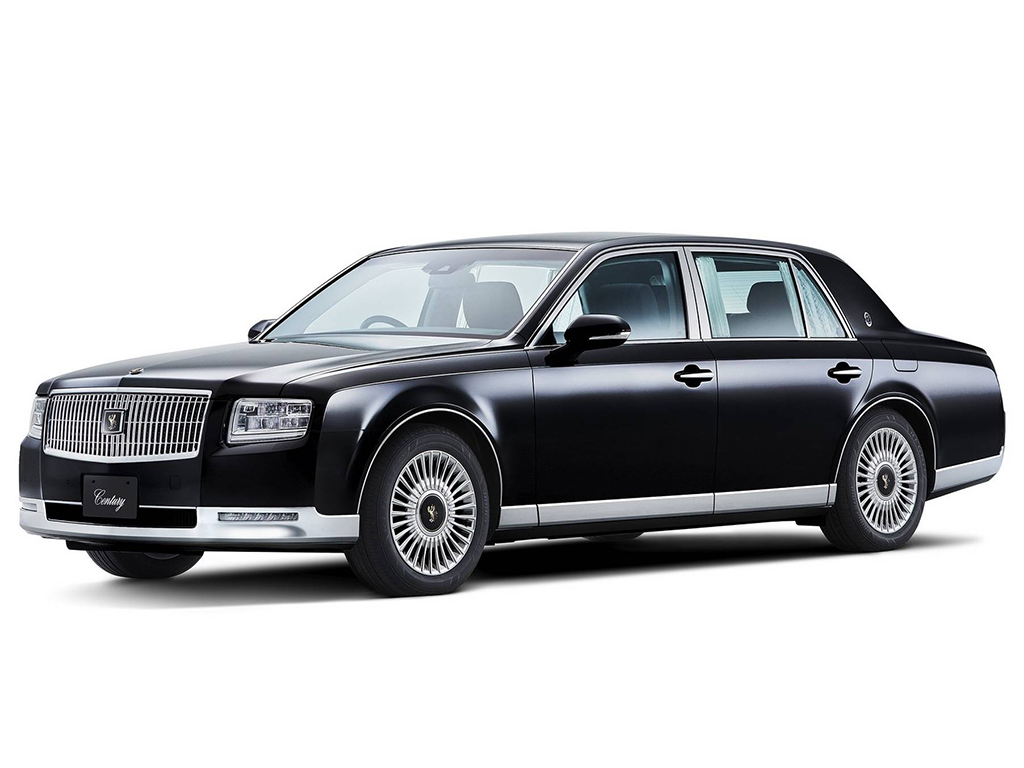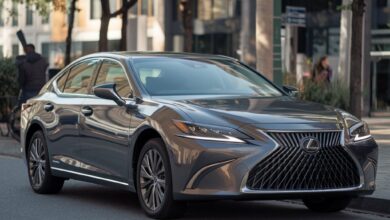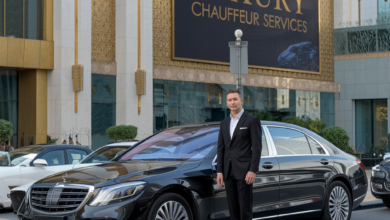Toyota Century Outshines Lexus and Mercedes-Benz in Supreme Luxury

When you think of luxury automobiles, the names Mercedes-Benz and Lexus likely come to mind first. However, there is a Toyota that has been quietly outshining even the most luxurious models from Mercedes-Benz—and it’s not a Lexus. This car is the Toyota Century, a vehicle steeped in tradition, craftsmanship, and unmatched luxury. Let’s take a closer look at the Toyota Century and explore why it is considered more luxurious than many of its competitors.
The Legacy of the Toyota Century: A Brief Overview
The Toyota Century was first introduced in 1967 as Japan’s answer to the world’s luxury vehicles. Named to commemorate the 100th birthday of Sakichi Toyoda, the founder of the Toyota Group, the Century was designed to serve as the ultimate expression of Japanese luxury and craftsmanship. Unlike its flashy Western counterparts, the Century has always maintained an air of understated elegance, embodying the principles of Japanese aesthetics—simplicity, subtlety, and perfection in every detail.
First Generation (1967-1997): The Birth of Japanese Luxury

The first-generation Toyota Century set the standard for Japanese luxury cars. During its 30-year production run, this model remained largely unchanged, a testament to its timeless design and enduring appeal.
- Design and Craftsmanship: The first-generation Century was crafted with precision, using the finest materials available. The exterior featured clean, elegant lines that exuded a sense of calm authority. Inside, the cabin was a sanctuary of comfort, with plush wool upholstery, handcrafted wood trim, and ample space for passengers.
- Engine and Performance: The Century was initially powered by a 3.0-liter V8 engine, which was later upgraded to a 4.0-liter V8. This engine provided smooth and refined power, designed more for comfort than speed. The car’s suspension system was tuned for a serene ride, ensuring that passengers were insulated from road imperfections.
- The Appeal: The first-generation Century quickly became the car of choice for Japanese dignitaries, business tycoons, and the Imperial family. Its understated luxury and superior build quality made it a symbol of success and status.
Second Generation (1997-2017): A Modern Take on Classic Luxury

After three decades, Toyota introduced the second-generation Century in 1997. While the new model retained the essence of the original, it incorporated modern technologies and refinements to keep pace with the evolving automotive landscape.
- Updated Design: The second-generation Century retained the classic proportions of its predecessor but featured subtle updates to its design. The car’s lines were smoother, and the overall appearance was more modern, yet it still exuded the same quiet dignity that the Century was known for.
- Enhanced Luxury: Inside, the second-generation Century offered even more luxury. The wool upholstery remained, but now passengers could enjoy additional features such as reclining rear seats with a massaging function, rear-seat entertainment systems, and advanced climate control. The craftsmanship was impeccable, with each car being hand-assembled by master craftsmen.
- New Powertrain: This generation introduced a 5.0-liter V12 engine, making the Century the only production car in Toyota’s history to feature a V12. The engine provided smooth, effortless acceleration and was paired with an advanced suspension system to ensure the ride remained supremely comfortable.
- Technological Advancements: The second-generation Century also saw the introduction of modern technology, including advanced safety features, a sophisticated sound system, and a navigation system. Despite these updates, the car remained focused on providing a serene and luxurious experience, rather than chasing after the latest tech trends.
Third Generation (2018-Present): The Pinnacle of Japanese Luxury

In 2018, Toyota unveiled the third-generation Century, marking a new era for the flagship model. This latest version builds upon the legacy of its predecessors while incorporating the latest advancements in luxury and technology.
- Refined Design: The third-generation Century features a more imposing design, with a bold front grille and sharper lines. However, it still maintains the understated elegance that has defined the Century for over 50 years. The car’s design is a masterful blend of tradition and modernity, with each detail carefully considered to create a harmonious whole.
- Luxurious Interior: The interior of the third-generation Century is nothing short of opulent. The wool upholstery, a hallmark of the Century, is complemented by exquisite wood trim and soft leather accents. The rear seats offer even more features than before, including adjustable footrests, a premium audio system, and a built-in fridge for drinks. Every surface, every button, and every switch exudes quality.
- Hybrid Powertrain: Under the hood, the third-generation Century features a 5.0-liter V8 hybrid engine, delivering both power and efficiency. The hybrid system ensures a smooth, quiet ride, perfect for the car’s intended purpose as a chauffeur-driven vehicle. The advanced suspension system further enhances comfort, absorbing even the slightest bumps in the road.
- Technological Innovations: While the Century remains focused on luxury, it also embraces modern technology. The car is equipped with a suite of advanced safety features, including adaptive cruise control, lane-keeping assist, and a 360-degree camera system. The infotainment system is discreetly integrated into the cabin, ensuring that technology never overwhelms the serene environment.
Why the Toyota Century Outshines Mercedes-Benz
While Mercedes-Benz is known for its luxury, the Toyota Century offers something unique—an experience that is deeply rooted in tradition and craftsmanship. Here’s why the Century stands out:
- Craftsmanship: Each Century is meticulously hand-built by skilled artisans, ensuring a level of quality and attention to detail that mass-produced cars simply cannot match. The materials used are of the highest quality, from the soft wool upholstery to the carefully selected wood trim.
- Understated Elegance: The Century’s design is the epitome of understated luxury. It doesn’t need flashy elements or aggressive styling to make a statement. Instead, it exudes a quiet confidence that appeals to those who appreciate the finer things in life.
- Exclusive Appeal: Unlike Mercedes-Benz, which produces cars in large quantities for a global market, the Century is produced in limited numbers, primarily for the Japanese market. This exclusivity adds to its allure, making it a symbol of prestige and status.
- Focus on Comfort: While Mercedes-Benz offers a blend of luxury and performance, the Century is focused entirely on comfort. The car’s ride quality is unmatched, with a suspension system that ensures a smooth, quiet journey, no matter the road conditions.
- A Tradition of Excellence: The Century is more than just a car; it’s a piece of Japanese automotive history. Each generation of the Century has built upon the legacy of its predecessor, creating a vehicle that is truly timeless.
The Unrivaled Luxury of the Toyota Century
In a world where luxury is often associated with brands like Mercedes-Benz and Lexus, the Toyota Century stands out as a hidden gem. It may not have the global recognition of its German rivals, but for those in the know, the Century represents the pinnacle of luxury and craftsmanship.
For car enthusiasts and those who appreciate the finer things in life, the Toyota Century offers an unparalleled driving experience. Its rich history, exceptional craftsmanship, and commitment to supreme comfort make it a standout choice.
In Dubai, where luxury car rentals are a significant part of the market, Duby Drive offers the exclusive Toyota Century for those who want to experience this extraordinary vehicle firsthand. For a unique blend of tradition and modern luxury, the Century is the ultimate choice.




